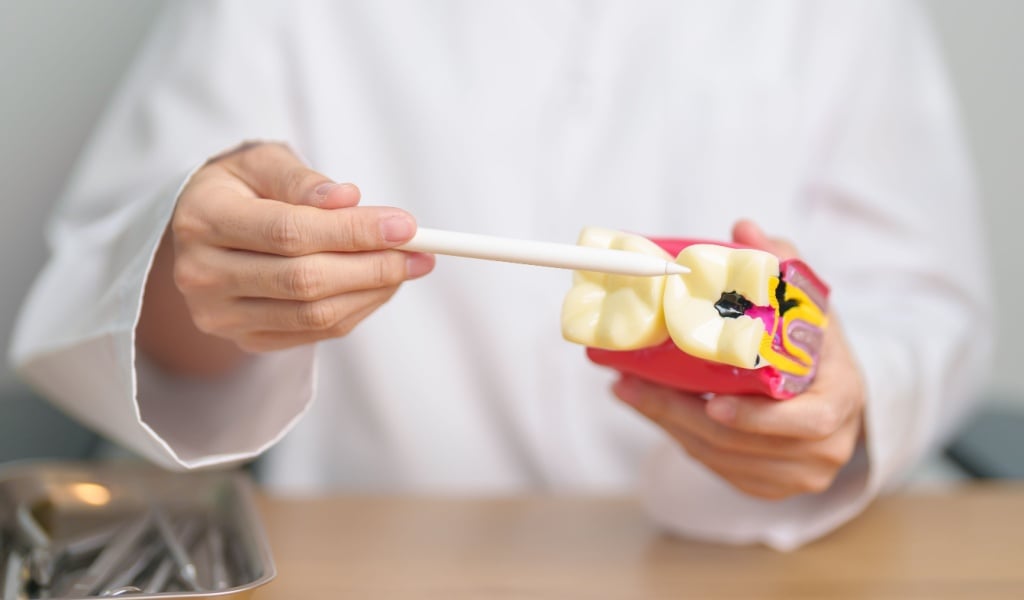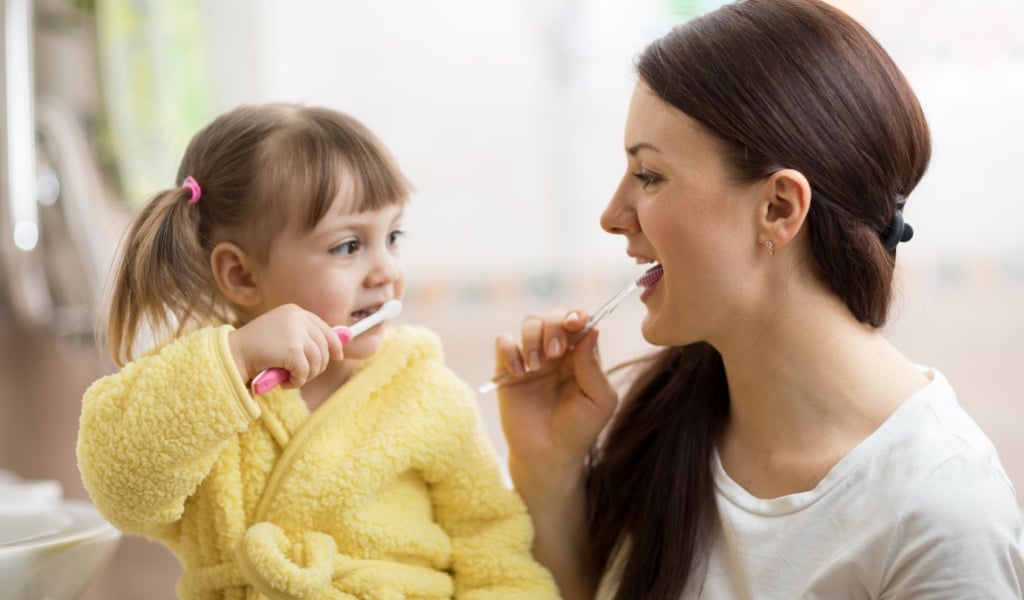If you are a parent, noticing a cavity in your child’s teeth can be a nightmare. If you have ever wondered how your child ended up with a cavity, even though they brush and floss regularly, well, you’re not alone. Dental caries are among the most infectious diseases, and sadly, brushing and flossing the teeth alone may not necessarily prevent cavities from forming.

What Causes Cavities To Form?
There are several causes for tooth decay, and bacteria play a key role. We all have bacteria in our mouth, and when bacterial colonies are left unattended, they form a white sticky film of millions of bacteria. This is called plaque. When the teeth are not brushed regularly or done incorrectly, plaque starts coating the teeth more heavily. If left for too long, the bacteria produce acids that eventually erode the tooth enamel, which is the outer layer of the tooth. So when these acids penetrate this hard layer, it signals the beginning of a cavity, essentially a tiny hole in the tooth.
The deeper the bacteria reach the tooth, the easier it is for the acids to erode its structure. When the dentin, the second layer of the tooth, is affected, it exposes the pathways to the nerve, resulting in a toothache.
How To Prevent Cavities In Your Child?
Thankfully, there are many easy habits you can encourage your child to develop to reduce the chances of developing a cavity.
Make Them Drink Plenty Of Water
Water keeps the mouth moist and balances the pH levels. It also washes away food particles from the teeth. Children love fruit juices and sugary drinks, but it is best to encourage them to avoid them. The combination of sugar and acid can become a breeding ground for harmful bacteria in your child’s mouth!
Encourage Flossing Early
Little hands will find a floss stick easier to work with than string floss. Your child will have to wiggle the string of the floss sticks between the teeth and gently drag it against the surfaces of the teeth. Demonstrate how it should be done and supervise them carefully before they can use the floss stick themselves.
Opt For Non-Sticky And Non-Starchy Snacks
We know sugar causes cavities, but starchy snacks are equally responsible. Seemingly harmless snacks like pretzels and small crackers can remain gummy and sticky on the teeth for hours. Likewise, fruit-shaped gummy snacks are common culprits, too. The gummy remnants can stick around for hours, feeding bacteria. If your child insists on such snacks, get them to brush afterwards.
Better yet, opt for a melty snack like yogurt, cheese, apple slices, and protein-rich snacks, which are less likely to cling to the teeth and feed bacteria.
Limit Snack Times
Children will snack all day if they can. But remember—each time your child has a snack, the bacteria get a chance to eat, too. Accordingly, you must restrict the number of times your child snacks a day, ensure they clean their teeth after having a snack, and drink plenty of water afterwards.

Ask The Dentist About Sealants
Sealants are applied directly to young teeth and add an extra layer of protection until the enamel is fully developed. They also fill in any cracks and empty spaces, keeping bacteria from settling in. Sealant application is a simple and pain-free process that will add years of protection for your child’s teeth.
Start Brushing Early
You must be ready to whip out the little silicone finger brush as soon as your little one sprouts their first tooth! Use a washcloth or a teething toothbrush early on. You don’t have to use a fluoride toothpaste, or any toothpaste at all, as babies may swallow the paste. Once they are a bit older, you can start using age-appropriate toothpaste. When your child reaches 3 years and can spit out toothpaste, you can use a pea-sized dollop containing fluoride.
Be Careful About Sharing Utensils With Your Child
Dental caries are infectious, so you can pass cavity-producing bacteria from your mouth to your child’s mouth even if you take just one bite from their spoon. So if you have a history of cavities, make sure that you brush and floss regularly, and be cautious about sharing eating utensils.
Introduce Them To Electric Toothbrushes
Once your child reaches three years of age, you can start them on electric toothbrushes. These do a great job of removing food and plaque as they spin at several thousand rotations per minute.
Help Your Child Brush
Did you know that most children don’t have proper coordination to brush their teeth until they’re about 7 to 8 years old? Brushing requires a lot of coordination—from holding the brush at the correct angle and applying the right amount of pressure to navigating it all around the mouth, it’s a lot of work for tiny hands. So help your child brush his/her teeth until they reach the age where they can control a pencil and write their name neatly.
Take Your Child To A Dentist Twice A Year
Professional teeth cleaning can remove hardened tartar on the teeth. Plus, your dentist can apply fluoride treatments to help strengthen your child’s teeth as they grow. Remember, the stronger the teeth, the harder it is for bacteria to penetrate the enamel. Visiting the dentist also ensures that any decay can be detected and addressed early.



